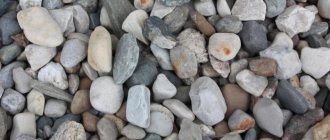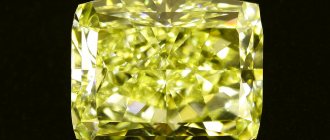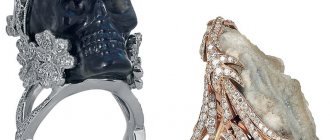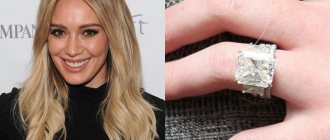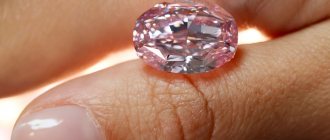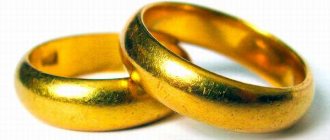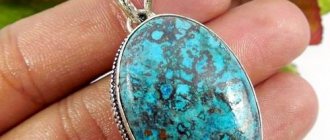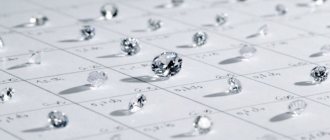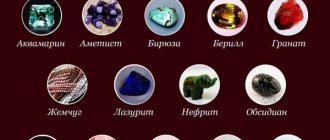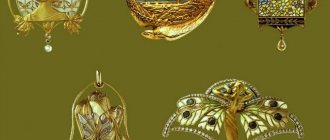Synthetic gemstones
This group includes complete analogues of natural stones. They have a similar crystal lattice, since their cultivation imitates the natural process of stone formation. The only difference is that in the laboratory and in industrial settings the stones are grown in a few days or weeks. Initially, crystal synthesis technologies were expensive, but today synthetic gemstones are cheaper than their natural counterparts. At the same time, they can have maximum purity and color saturation, which is rarely found in nature. Stones in this group receive the names of natural minerals with the addition of “synthetic” or “grown”: “synthetic ruby”, “grown emerald”.
Imitation inserts: a little history
The most popular imitations of precious and semi-precious stones in jewelry are cubic zirconia and Swarovski crystals (rhinestones). Remember, cubic zirconia is not an artificial diamond! It does not contain carbon, the main element for diamonds, but contains zirconium oxide. Cubic zirconia was obtained in the mid-1960s by scientists at the P. I. Lebedev Physical Institute of the USSR Academy of Sciences (FIAN), after whom it was named.
The idea of imitating diamonds using cut lead glass was invented in the 18th century by glassmaker and jeweler with German roots, Georg Strass, who lived in French Alsace. The master’s surname became the name of his invention: the spectacular inserts were called “rhinestones.” A century later, Strass's ideas were developed by Daniel Swarovski, a hereditary cutter of Bohemian crystal. He improved the composition of rhinestones, the quality of polishing and the durability of spraying, so that they were not inferior to diamonds in the beauty of cut, transparency, play of light and brilliance. In 1895, Daniel founded the Swarovski company in Austria to sell his products to the whole world and primarily to fashion designers in Paris. The business of the talented cutter, inventor of the first electric cutting machine (1892), thanks to the efforts of his descendants, continues to flourish today. Swarovski crystals (rhinestones) have 12 facets, are made from high-quality crystal (glass with 32% lead oxide content) with the addition of powdered synthetic and natural stones of jewelry value.
Growing with Organic Salts
This method can be used when you are just starting to grow stones, and then move on to more complex ones.
This is the simplest and most affordable way to make gemstones. You will need:
- raw materials (alum from aluminum or potassium, table salt);
- a vessel in which the crystal will germinate, for example, a glass, jar or pan;
- filter (ordinary cotton wool or blotter will do);
- fishing line
The most popular material for growing gemstones is copper sulfate. Gemstones grow worse from standard salts, while copper sulfate is cheaper and more effective.
Other raw material options:
- bertholetic acid;
- ammonium chloride;
- sodium chloride;
- sodium sulfate.
Production consists of several steps:
- Preparation of the solution. First, pour a couple of tablespoons of salt into the container, then fill it with hot distilled water to the brim and stir until the crystals dissolve. You need to continue until the sediment begins to fall to the bottom.
- Composition filtration. If you use a dirty solution, the crystal will also be defective. Therefore, you need to infuse the liquid for 24 hours until the excess particles inside it settle to the bottom. They will also come in handy - the crystals themselves will grow on them.
- Tying the fishing line. The crystal will grow on the fishing line, as if crawling up it. You need to take a pencil, pen or other fastener, tie a fishing line to it and hang it over the vessel with the solution. It must be completely immersed in the composition. When the water evaporates, only a solid substance (vitriol crystals) remains, which will settle on the fishing line.
- Add the solution for two weeks. Over the next fourteen days, the saturated composition must be added to the container. If this is not done, the water will quickly evaporate, and the crystal will not have time to grow. The added solution should be at the same temperature as the composition in the glass.
- Pull out the crystal. After three months, the organic salt gemstone will be ready. It must be dried and then coated with colorless varnish (you can use regular nail polish). This is necessary to protect and retain shine.
First and foremost
A variety of materials are inserted into jewelry. They are called jewelry inserts. From diamond to birch bark, the insert can be anything, and its selection depends on such ambiguous things as the master’s idea, the properties of the material and the ability to find a buyer.
There is a more precise definition:
Jewelry insert - any material intended for insertion into jewelry, including precious stones and their imitations, rare and valuable types of wood, unprocessed natural nuggets, artificial materials that have no natural analogues.
When it comes to a natural or artificial stone that is suitable for jewelry, it is called a jewelry stone . That is, every jewelry stone is a jewelry insert, but not every insert is a stone, especially a natural one.
Among the jewelry stones there are precious ones . The circulation of precious stones, suitable and unsuitable for jewelry, in Russia is regulated by the Federal Law of March 26, 1998 N 41-FZ (as amended on August 2, 2019) “On Precious Metals and Precious Stones.”
Imitations and counterfeits of precious stones using composite materials
In addition to all-glass imitations, so-called “composite materials” are often used. Depending on the number of layers of thin strips of glass and natural stone glued together, these materials are called doublets or triplets. Obviously, the top layer (visible as the surface of the stone) is a strip of natural stone glued to a strip of glass below. Jewelers can easily recognize such technologies, since even through a regular magnifying glass one can see gas bubbles at the place of gluing. An example of a doublet with turquoise can be seen in the picture at the beginning of the article.
Even in ancient times, precious stones were counterfeited in similar ways. For example, sardonyx was “made” by gluing black, white and red strips in three layers. Two natural materials are also glued together in the form of a doublet - for example, a precious strip on top and rock crystal on the bottom. In the language of the jewelry industry, the resulting stones are called “opal doublet” or “emerald triplet.” Composite materials can also be used for “good” purposes. For example, to give greater hardness to an inexpensive and soft stone in mass-produced jewelry.
JEWELERY STONES - CATALOG | NATURAL STONES - GUIDE TO PROPERTIES | SYNTHETIC JEWELRY STONES
Sources of origin of precious stones (natural stones, imitation, synthesized, refined) | Characteristics of precious stones. Gems by value | How to determine whether a jewelry stone is real or artificial? | Crystal synthesis - how are artificial gemstones grown? | Refinement of stones | Swarovski crystals and cubic zirconia | Jewelry stones and accepted methods of refining them
Share this article with your friends
Works by designers from the JEWELIRUM catalog
- Co.Cos Jewelry
- Co.Cos Jewelry
- Taiga Jewelry, Tomsk
- Taiga Jewelry, Tomsk
- Ilya Maksimov, Crimea
- Ilya Maksimov, Crimea
- UBIRING
- UBIRING
- Diamonds are Forever
- Diamonds are Forever
- Rings in natural style, Sergacheva Jewelery
- Earrings with pearls, Sergacheva Jewelery
- Cabochon ring, Minty Sky
- Fly earrings, Minty Sky
- Ring, Precious Park
- Ring, Precious Park
- Snake skin ring, Stoyanova Jewelery
- Chain earrings, Stoyanova Jewelery
- Children's pendant - stick, Matthew&Daniel
- Pendant for a child, Matthew&Daniel
- Bracelet, Svetlana Subbotina
- Ring with Slavic symbols, Svetlana Subbotina
- Indian style ring, Anna Goffman
- Indian style ring, Anna Goffman
- Earrings, ISTA
- Geometric ring, ISTA
- Earrings with enamel, PNJewelry
- Ring with enamel, PNJewelry
- Ring, Khramtsova Jewelry
- Ring, Khramtsova Jewelry
- Wedding rings to order, obruchalki.com
- Wedding rings to order, obruchalki.com
- Earrings, Yuri Bylkov
- Earrings, Yuri Bylkov
- Titanium bracelets, LanaMuransky
- Titanium pendant, LanaMuransky
- Brooch Elephant (after Salvador Dali), THING
- Ring Veil, THING
- Mace earrings, VLADIMIR MARKIN
- Cufflinks, jewelry mechanics, VLADIMIR MARKIN
- Drop-shaped ring, EKATERINA TOLSTAYA
- Drop-shaped earrings, EKATERINA TOLSTAYA
- Necklace with amber, LETA
- Earrings with amber, LETA
- Children's earrings, combinable, FASHBY
- Children's earrings, combinable, FASHBY
- Ring of architectural form, Elizaveta Malafeevskaya MANU_L
- Architectural bracelet, Elizaveta Malafeevskaya MANU_L
- Set Ginkgo Leaf, SHABUT JEWELLERY
- Brooch Wearable porcelain, SHABUT JEWELLERY
- Architectural ring, GEOMETRY
- Brooch, porcelain, GEOMETRY
- Necklace made of polymer clay, LICORNE ART
- Brooch made of polymer clay, LICORNE ART
- Ring, avant-garde, VALERY SEREDIN
- Bracelet, avant-garde. VALERY SEREDIN
- Wooden set, Scandinavian/Japanese minimalism, VLADIMIR SHESTAKOV
- Ring, Scandinavian/Japanese minimalism, VLADIMIR SHESTAKOV
- Earrings, TON ANT
- Ring, TON ANT
- Architectural ring, ANCHOR
- Architectural necklace, ANCHOR
- Earrings, GOHFELD JEWELLERY
- Necklace, GOHFELD JEWELLERY
- Massive ring, YAKISCHIK
- Designer jewelry, YAKISCHIK
- Architectural ring, ONE DAY ART
- Architectural ring, ONE DAY ART
- Brooch, bionics, VALERIYA MARKOVA (TESSA)
- Unclosed ring, bionics, VALERIYA MARKOVA (TESSA)
- Ring, bionics, BEAVERS
- Earrings, bionics, BEAVERS
- Earrings, asymmetry, VAGANOVA JEWELRY
- Airplane ring, VAGANOVA JEWELRY
- Flower ring, ALCHEMIA JEWELLERY
- Set, ALCHEMIA JEWELLERY
- Pendant-cat, ethnic, STUDIO OF ILYA AND VERA PALKIN
- Earrings, STUDIO OF ILYA AND VERA PALKIN
